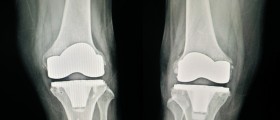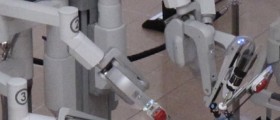
When they say that there are possible complications,should I drop surgery as an option?
No. Medicine andsurgical techniques in all fields, including the knee surgery, haveadvanced a great deal over the last couple of decades. But they havenot become bulletproof, and surgical complications are still possibleand can still happen, and do happen. Every kind of operation, nomatter how insignificant it might be, carries a certain degree ofrisk. Related complications range from the most insignificant, suchas pain (well, you were cut, weren't you) to the life threateningand even fatal complications.
When the doctor speaks to the patient about thecomplications, this does not imply that the doctor is a lousy surgeonand that things will go wrong. There might or might not becomplications and speaking or not speaking about them will not changeanything.
Knee surgery complications
Knee conditions are not life-threatening and havemuch more to do with the quality of life. Because of that, thepatient should make the decision whether to try to resolve thecondition by means of surgery or not. The surgeon's task is toprovide the patient with the information that will help him reach anunbiased decision. Beside potential good and bad sides ofintervention, this also includes informing the patient aboutpotential complications.
During the complicated surgery cases, it is possibleto inflict damage to some major nerve or artery, which is serious,but fortunately, very rare. Fractures of the bones that form theknee, that is, the fibia and the femur, are also possible. Tendons ofthe patella and the quadriceps might be torn, and injury to theligaments of the knee is also possible.
After the surgery, most common complication is pain.Modern surgical techniques such as arthroscopic surgery are aimed atminimizing postoperative pain. Still, some pain must be felt in thedays after the surgery. It is a normal response of the organism toinjury of the tissue. Luckily, pain that is felt is usually verymoderate. Hematomas, collecting of blood ion the interstitial space(space between cells, tissues or organs) are also possible. Ifhematomas form in the joint itself, they can be drained through theinserted needle.
Infections, that is, contamination of the wound withbacteria and their proliferation, if they occur at the knee joint,should be taken seriously. Symptoms of an infection include swelling,fever, and persistent or new drainage through the site of theincision. The surgeon must be informed of any such occurrence, and anantibiogram should be done to determine which antibiotic should beadministered.
Other complications include formation of blood clots,joint stiffness, and skin complications such as painful scars,numbness and pain in the region of the scar, and even an inability of thewound to heal.

















Your thoughts on this
Loading...